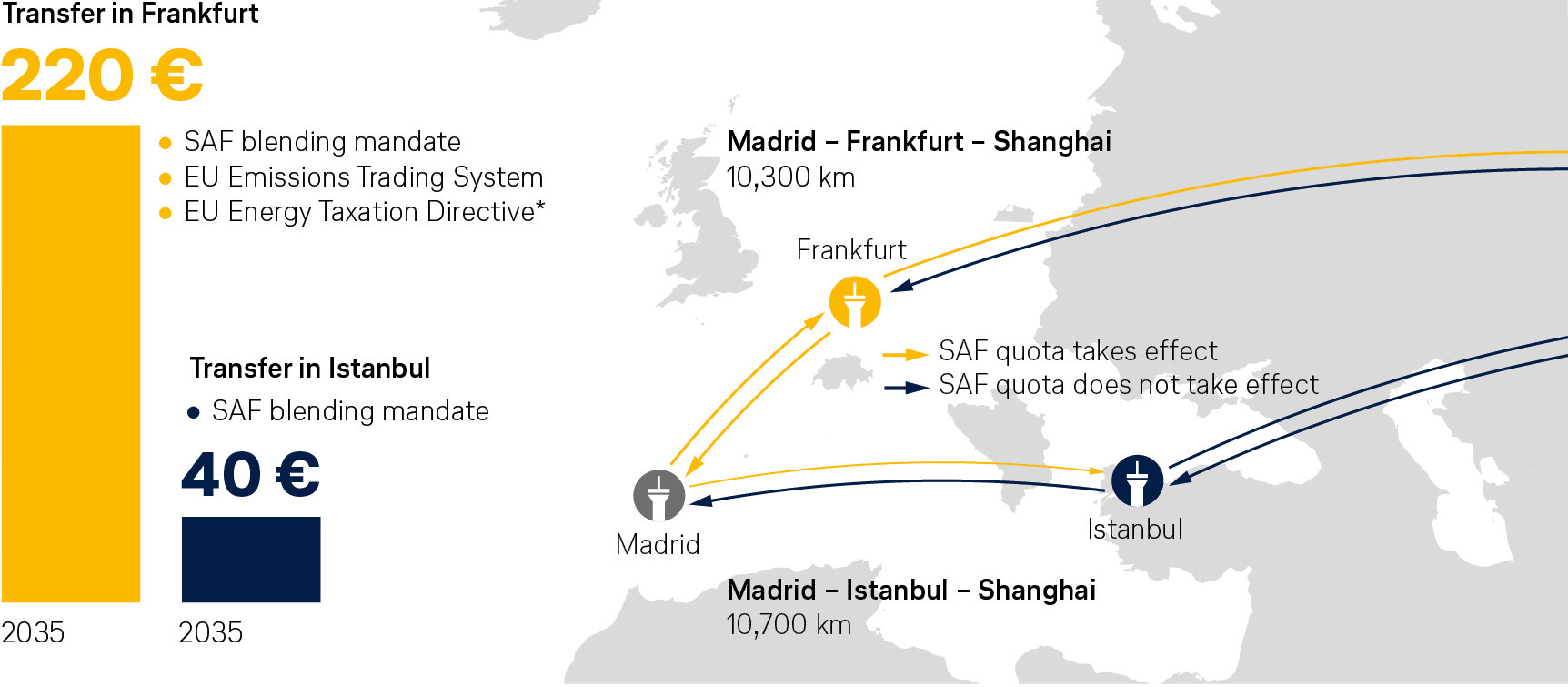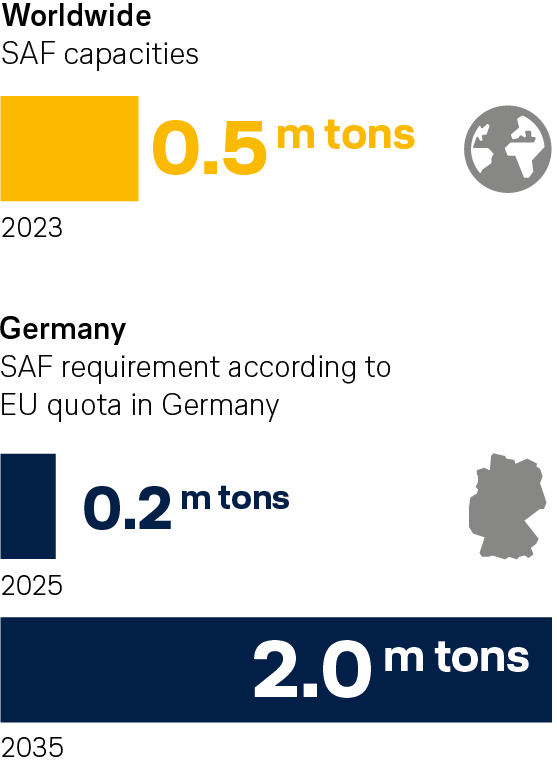SAF: promote ramp-up, correct quota
According to ReFuelEU Aviation, kerosene refueled at airports within the Union has been required to contain two percent SAF since January 2025. The quota is set to rise to 70 percent by 2050. Biogenic fuels are currently around three to five times more expensive than fossil kerosene. Electricity-based fuels (power-to-liquid = PtL), which are not yet produced industrially, are expected to cost up to ten times more. Because the blending mandate applies to departures from the EU, it will unilaterally make transfer flights via EU hubs more expensive. However, the price increase for journeys via Istanbul, Doha or Dubai, where the expensive SAF does not have to be refueled, is marginal. In the medium and long term, this will result in traffic and emissions shifting to Europe's doorstep - without any benefit for the environment (“carbon leakage”), but at the expense of European network airlines.
ETS reform: treat feeder flights equally
Aviation has been part of the European Emissions Trading System (ETS) since 2012. Since then, airlines have had to buy certificates for an annually increasing proportion of their CO2 emissions on intra-European routes. The ETS reform ends the partly free allocation of CO2 certificates. From 2026, all certificates will be auctioned. The result: a considerable increase in costs for airlines operating in and out of Europe. For example, when traveling from Madrid to Shanghai, CO2 certificates must be purchased for the feeder flight to Frankfurt, but not for a feeder flight to Istanbul or Dubai.
In their planned form, the SAF quota and ETS reform have a central weakness: they do not provide effective protection against carbon leakage and put European network airlines at a disadvantage compared to airlines with a hub outside the EU. Targeted corrections are necessary.
- Introduce a European climate protection levy (SAF levy): A fair and simple solution would be a SAF levy based on destination – regardless of where a passenger transfers. The revenue generated could be used to procure SAF to meet the blending quotas. This creates fairer competition and promotes climate protection.
- Promote the production and use of SAF: A targeted promotion strategy is needed to ensure that Europe has sufficient SAF at competitive prices in the future.
- Review CBAM for aviation: The Carbon Border Adjustment Mechanism (CBAM) can help to effectively reduce emissions in global industries. In aviation, it would create fair competitive conditions between EU and non-EU airlines.
The EU's “Fit for 55” package unilaterally drives up costs for EU airlines
SAF quotas are the biggest cost driver in the EU's “Fit for 55” climate protection package.

* not adopted
Avert kerosene tax, examine further climate protection measures
The third aviation-related “Fit for 55” legislative proposal concerns the revision of the Energy Tax Directive (ETD). It would be reasonable to extend the tax exemption for kerosene in the EU, as is currently being considered at the EU level. A purely European kerosene tax would be an industrial policy own goal with no direct effect on the climate. Non-EU carriers, which would not be affected by this tax, would gain a significant cost advantage. This cannot be politically desirable.
SAF demand significantly exceeds supply
In 2023, 500,000 tons of SAF were produced worldwide. In accordance with the European SAF blending mandates, Germany alone will need 200,000 tons as early as 2025 and 2 million tons by 2035. Whether sufficient capacity will be available for this remains uncertain.
Sources: BDL, T+E
![[Translate to EN:] [Translate to EN:]](/fileadmin/user_upload/policy_hub/themen/fit_for_55/fitfor55_header_v3.jpg)
